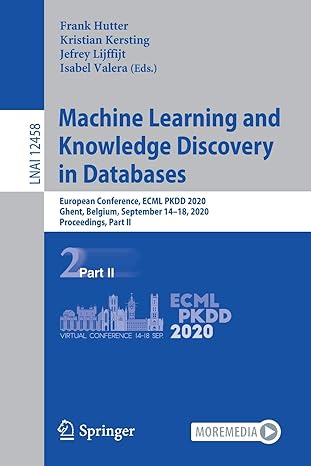Question
1. Use C++ for this assignment. There are 2 drawings to be turned in one CRC' drawings and 1 flow chart drawing. 2, To turn
1. Use C++ for this assignment. There are 2 drawings to be turned in one CRC' drawings and 1 flow chart drawing.
2, To turn in your CRC cards, you can scan or copy them to a single computer document. To turn in your class diagram you can
Draw the class diagram using a computer graphics program, then provide the drawing in a PDF, JPEG, or other common format Scan hand drawings.
Please see spectifations below:
Define a simple class with a default constructor, a copy constructor (i.e., a constructor that takes the single parameter: const SimpleClass& src), and destructor. Annotate each one so that it writes to cout each time it is invoked.Declare four functions, f1, f2, f3, and f4 with the following prototypes:
void f1(SimpleClass aSimpleClass); void f2(SimpleClass aSimpleClass); void f3(SimpleClass& aSimpleClass); void f4(SimpleClass* aSimpleClass)
Declare an instance of SimpleClass in the function main and call f1 with that instance as an argument.
Declare an instance of SimpleClass in the function f1. Pass that instance by value, to function, f2.
Declare an instance of the SimpleClass in f2 that uses the copy constructor. Pass that instance by reference to function f3.
Declare a function f4 that takes a pointer to an instance of SimpleClass. Call f4 from within f3 using a pointer to the argument passed into f3.
How many instances of your class were constructed? How many instances of your class were destructed? Why?
Let's explore an open-ended design problem to which we can apply our skills in the design of object-centered systems. You are the chief designer of a consulting firm and you have been hired by The First National Bank to upgrade its customer database. You have chosen to rewrite the database using C++. Each customer account consists of a savings account and a checking account.
Begin the design by developing a set of use cases for the combined account that will describe how a customer may interact with the account.
Based upon your design thus far, use CRC cards identify each of the classes that comprise your design. Be certain to identify the primary public and private aspects of each of the classes that make up a customer account.
Express each of the classes that you have identified in a class diagram. Don't get carried away here. There are only a couple of basic attributes of such an account.
Step by Step Solution
There are 3 Steps involved in it
Step: 1

Get Instant Access to Expert-Tailored Solutions
See step-by-step solutions with expert insights and AI powered tools for academic success
Step: 2

Step: 3

Ace Your Homework with AI
Get the answers you need in no time with our AI-driven, step-by-step assistance
Get Started


